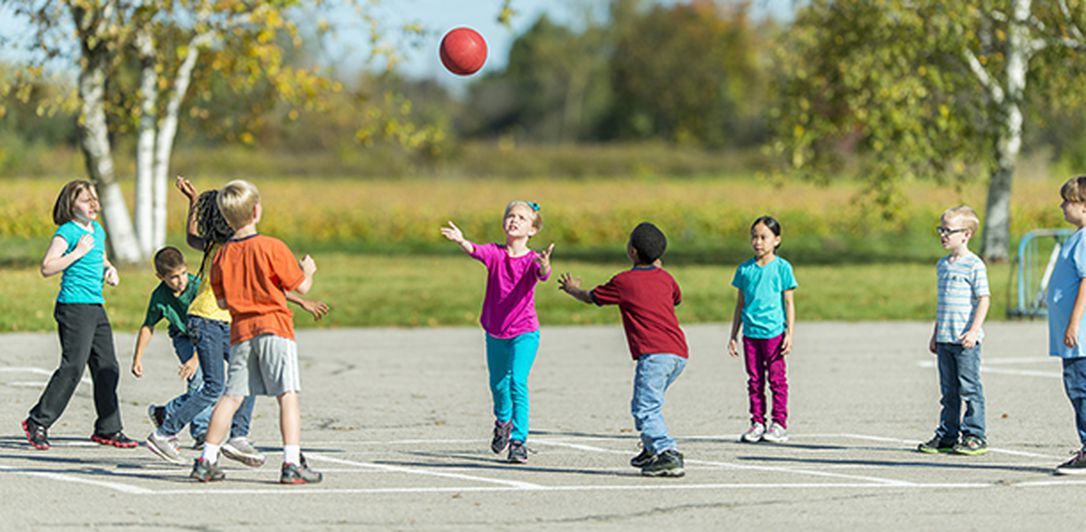The 5 Pillars of Developing Physical Literacy at School
The whole child approach
is becoming more and more popular in schools. To teach the whole child means to respect the four domains of well-being in the school environment. The four domains are: cognitive, emotional, social and physical. They are interconnected. That’s a great thing because it means every teacher is now just as responsible as the physical education teacher for improving the students’ health and wellness.
If schools focus on developing the students’ physical literacy, they are subsequently striving to support their affective, physical, cognitive, and behavioural well-being.
I am a grade five and P.E. teacher at École Élémentaire Publique Jeanne-Sauvé, in Orléans, Ontario. The following five pillars give all students at my school a better chance at improving their physical literacy. They are deeply rooted in my school’s culture. We’ve been lucky to have principals who strongly believe in the benefits of physical activity. My colleagues and I are all extremely active in our own unique ways. Students, parents and staff members love to learn and move.
Quality Education
Our students have daily physical education or daily physical activity. This is when they get to develop their fundamental movement skills and sports skills. Physical education is mostly done in a gymnasium or outdoors. My colleagues and I rely heavily on Ophea’s Teaching Tools. The focus isn’t solely on sports. We often use stations and the Teaching Games for Understanding Approach
to improve our students’ participation and quality of movement. Of course, sports are also played but gone are the days that we only play one sport a month at a time.
Intramurals
Our intramural program allows grade four, five, and six students to participate in sports regardless of skill level. They have a chance to play in a friendly, positive, and inclusive environment because we’ve committed ourselves to the True Sport Principles.
Before the intramurals program, typically, only the most athletic students participated in sports outside of physical education class. That meant only a handful of students played and improved. With the addition of our intramurals program, we’ve noticed a huge increase in participation. For example, we have over 100 students who participate in our volleyball and skating intramurals.
Sports Teams
Skills for various sports are introduced in both physical education class and through intramurals. After having a chance to practice, our students can decide if they want to try-out for the various sports teams. If selected, they can participate in the school board tournament.
There have been many interesting debates on social media lately about cutting children. Russell High School has an innovative and inclusive approach for selecting students. Students who show up get to play. That’s an excellent approach. Schools are supposed to be inclusive. Having intramurals or a sports program like Russell High School are great ways to include students and improve their physical literacy. I believe that every child deserves a chance to play regardless of ability level. We want to develop and help all of our students and not just the most athletic. The school setting is the best setting to develop everyone’s physical literacy. Being part of a sports team or an intramurals program isn’t about winning a banner or a trophy at the elementary level. It’s so much more than that. It’s about having fun and creating positive relationships while being active.
School Activities
Students are given lots of opportunities to participate in other physical activities during the school year. Our school-wide activities allow all of our students to participate and enjoy themselves by developing their sports and movement skills. Often, our students even discover a new passion and pursue it outside of the school environment.
Here’s a list of activities we organize:
- Use stationary bikes in the classroom to cycle across Canada
- Ski club
- Terry Fox event
- Special guests such as Jungle Sport or Escapade Eskimo
Recess and Adventurous Play
We strongly believe that recess is essential for our students’ health. Whether they are using the time to quietly recharge with friends or climbing on the structure, playing tag, or organizing impromptu soccer games, recess provides a much needed break.
Our students also need adventurous play. Adventurous play allows children to test their bodies and improve their physical literacy.
Here are examples of what adventurous play at recess could look like:
- Climbing up the slide when it isn’t occupied
- Playing in puddles with rain boots
- Sitting on top of the monkey bars
- Playing with previously broken tree branches
My colleagues and I are responsible for eliminating hazards, such as cleaning up broken glass or verifying the safety of play structures, so that our students can have adventures without hurting themselves.
The five pillars are designed to help our students develop their physical literacy by providing them a variety of physical activities and social experiences. We want our students to be knowledgeable, confident, motivated, and physically competent. We also want them to be socially, mentally, and physically healthy. I really enjoy working at École élémentaire publique Jeanne-Sauvé because we truly do have the foundations of a healthy school.





